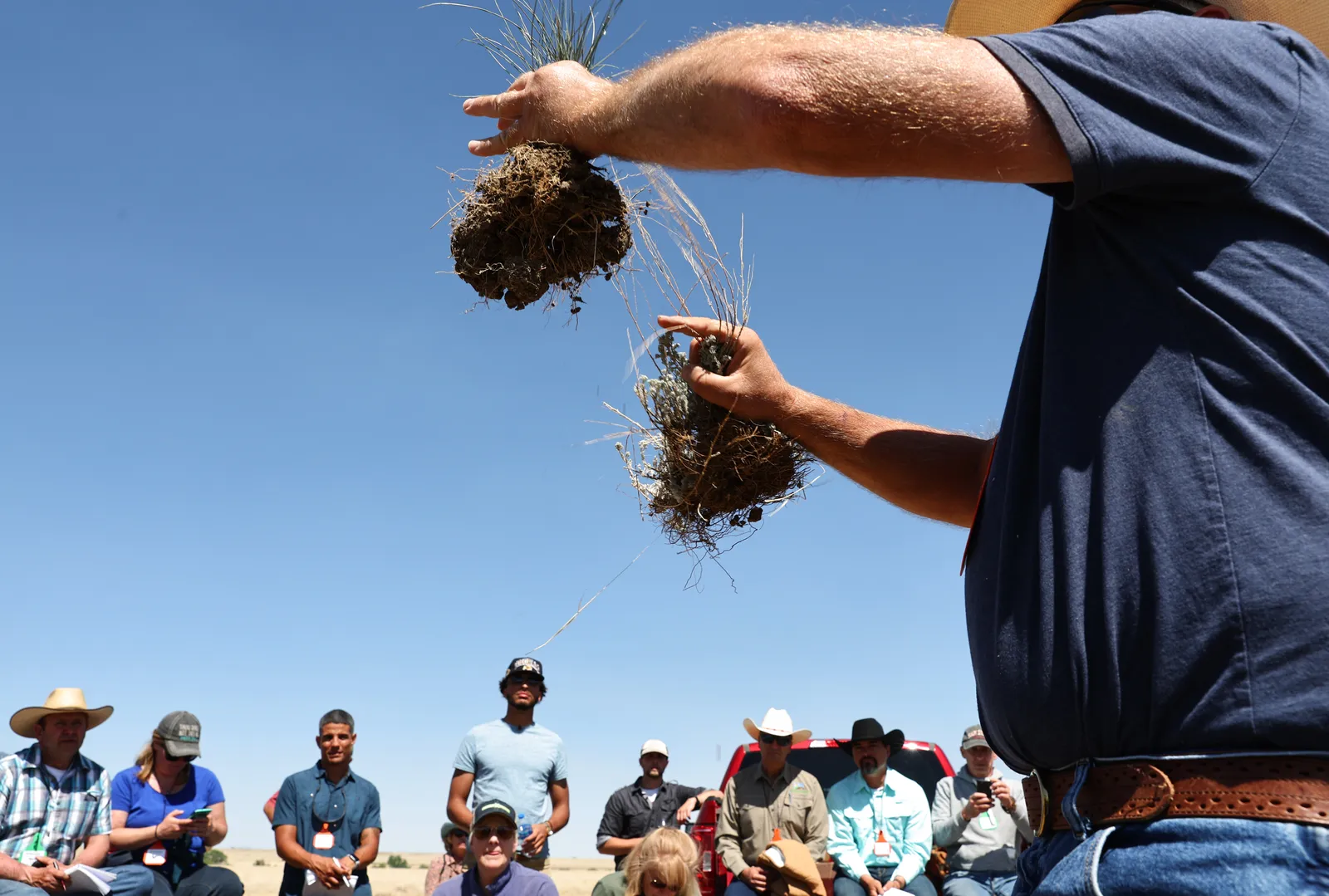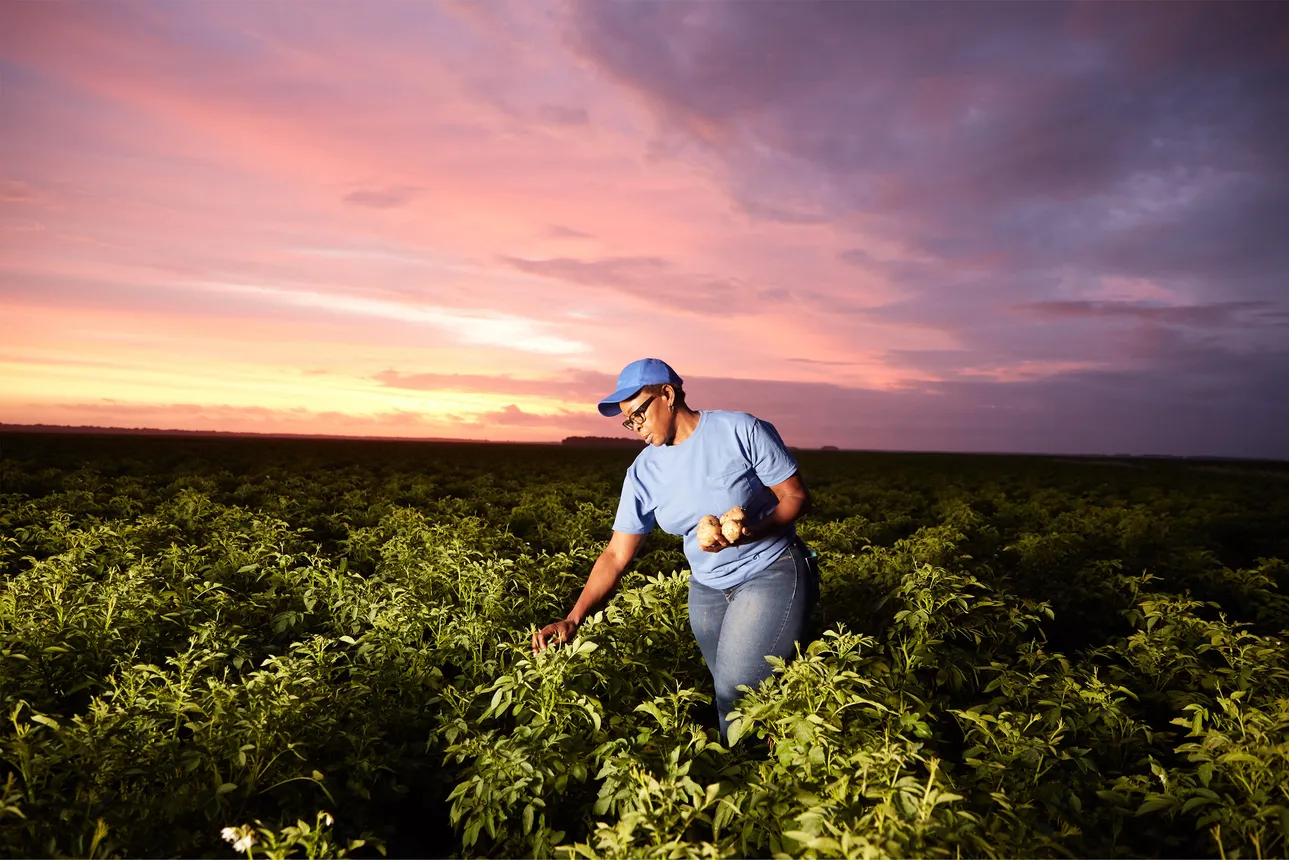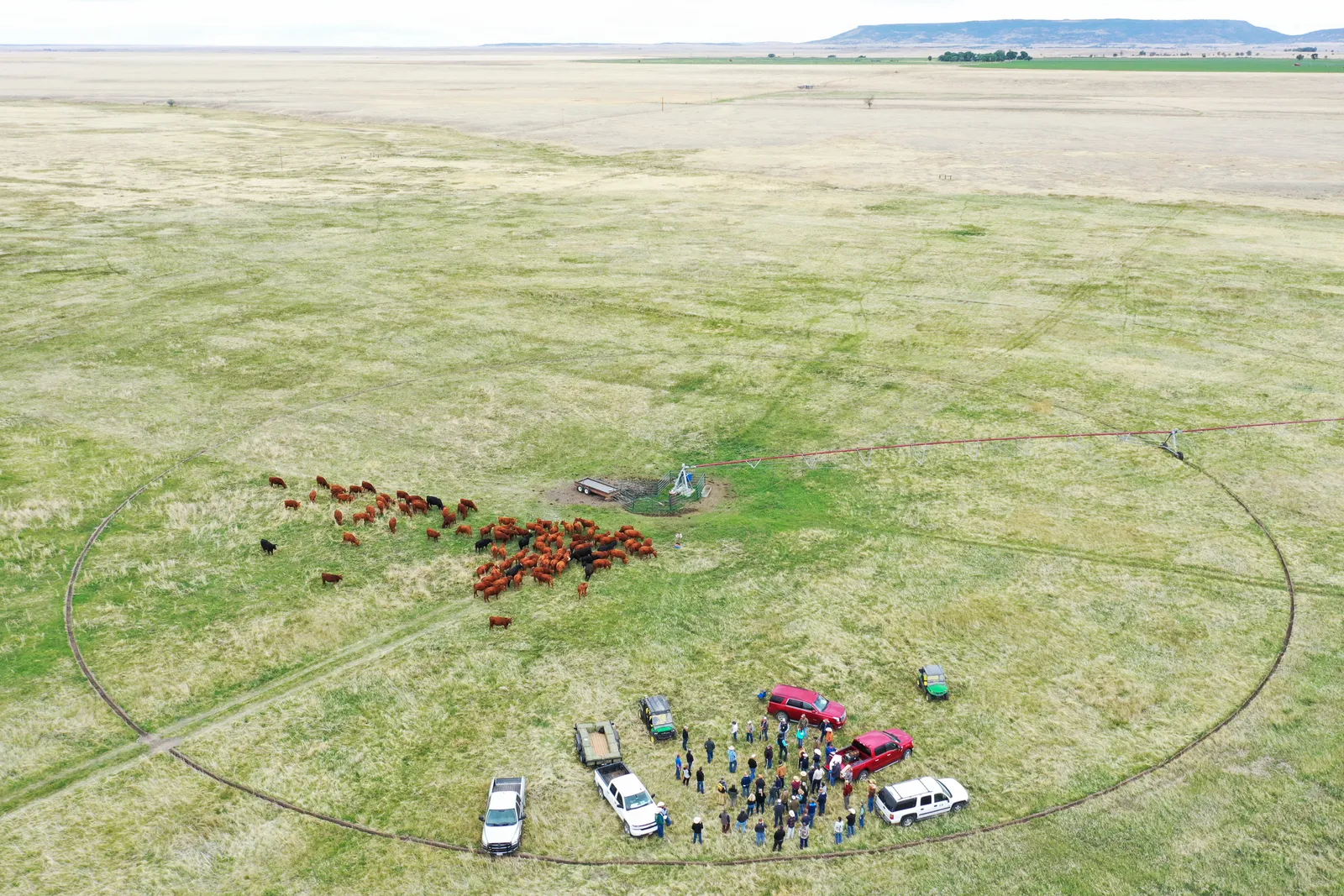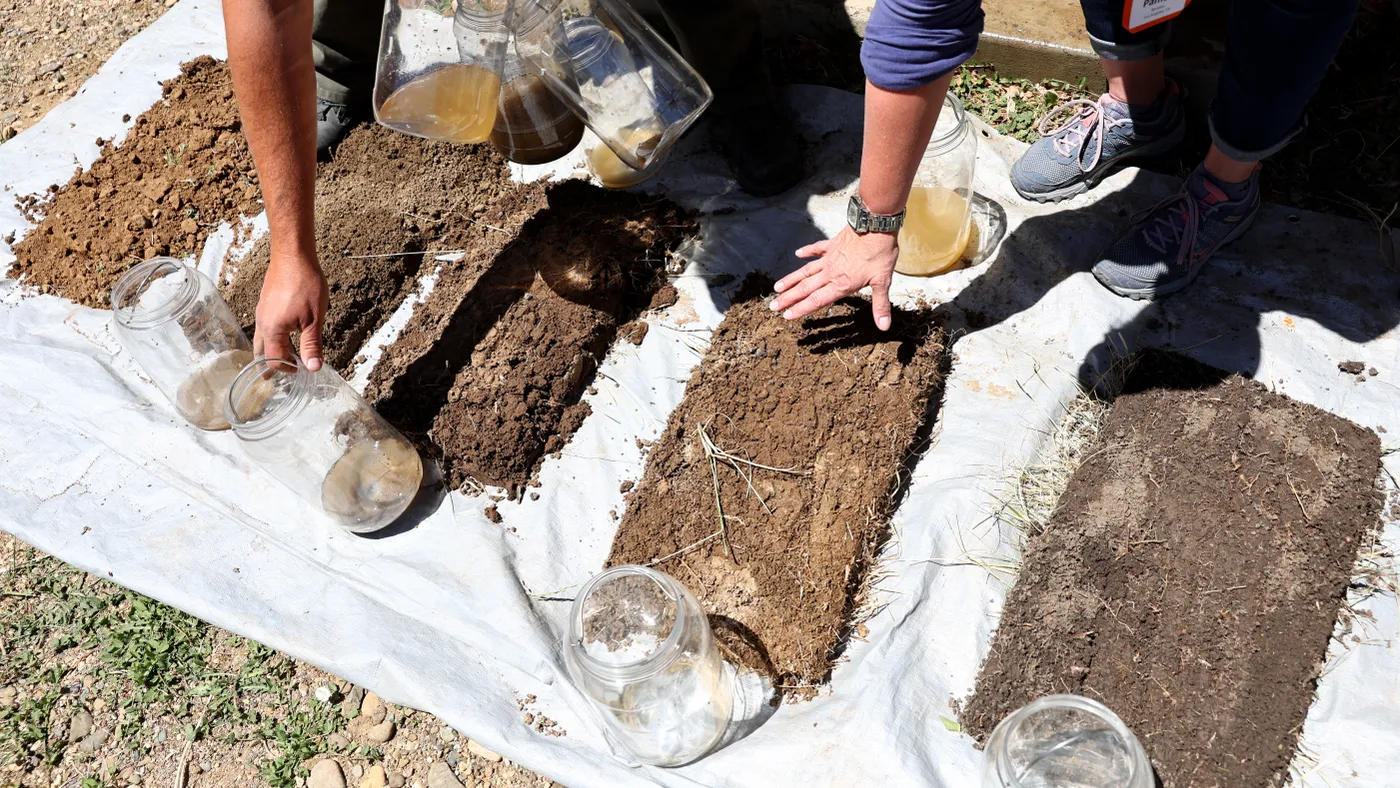Food companies are making lofty promises about lowering emissions by the end of the 2020s, and regenerative agriculture is touted as a solution to improving their carbon footprints. But many experts say a lack of a definition for regenerative agriculture may do more harm than good.
Broadly, “regenerative agriculture” is any form of farming that actively works to sequester carbon from the atmosphere into soil. There are a variety of farming methods, including cover crops and intercropping, both of which are methods to implement new crops into a farm’s ecosystem. Regenerative farms typically don’t disturb the soil as much as conventional farms and avoid heavy fertilizers.
A recent report from the agriculture group Food and Land Use Coalition pointed out that unrealistic claims can lead some companies to misrepresent what is possible with sustainable farming practices.
“The lack of alignment leads to confusion among stakeholders about what regenerative agriculture involves and what it can achieve,” said Theodora Ewer, one of the report’s authors.
Some large companies have embraced regenerative agriculture, such as PepsiCo, which works with farmers to implement practices across its global supply chain, including with corn, wheat and soy farmers in the Midwest.
The CPG giant has committed to spreading these sustainable practices across its key ingredient footprint, equal to 7 million acres. PepsiCo estimates that regenerative farming will cut at least 3 million tons of greenhouse gas emissions by the end of this decade.
General Mills is embarking on a farmer-focused pilot project across the U.S. and Canada. The company is looking at farmland as a living ecosystem to maximize biodiversity.
Meanwile flour giant King Arthur is collaborating with competitor companies as part of a network of wheat growers in North Dakota in order to align their shared sustainability goals.

Critics call farming methods into question
But skeptics point to the lack of clearly defined principles — with each company having its own general idea of how to approach regenerative agriculture — as a risk of greenwashing.
Some critics point to the touted impact of specific agricultural practices as misleading.
In 2018, Andrew McGuire, an agronomist at Washington State University’s Center for Sustaining Agriculture and Natural Resources, argued that companies are using the label of “regenerative agriculture” to imply that implementing a mixture of cover crops can increase the diversity of their soil without the need for synthetic fertilizers.
“If cover crop mixtures are so beneficial, those benefits are sure hard to detect,” McGuire said. “Nor have I found evidence showing that intercropping is better than a diverse rotation of monocultures.”
In an interview with Food Dive earlier this year, Jim Walsh, policy director for sustainability organization Food & Water Watch said no-till agriculture requires pesticides and fertilizers and therefore is more harmful than tilling.

In with the outcomes
Outcomes-based measures would help alleviate the greenwashing effect that some think the regenerative-agriculture has come to represent.
FOLU reported that the most accurate data about food companies’ operations should be publicly available to allow for the most transparency.
“Policy makers should re-purpose agricultural subsidies to support agriculture that achieves positive outcomes,” Ewer said. “Subsidies should be aligned with an outcomes based framework to ensure stakeholders are rewarded for delivering on positive outcomes, rather than on volume or practices.”
The agriculture group pointed to a stakeholder initiative, Regen10, which the organization said applies pressure to food companies to take action. FOLU, Ewer said, engages with farmers and indigenous groups on a framework for how to best implement regenerative agriculture methods across regions.
“The framework will allow food system actors to properly measure agricultural outcomes to inform practices, guide incentives, validate data flows, and drive innovation and adaptation,” Ewer said.

Advocates embrace its purported benefits
Some experts are more optimistic about regenerative agriculture and see the benefits outweighing some of the confusion.
A University of Washington study published in 2022 found farms that increased the biodiversity of their soil and added cover crops over five years produced more nutritious food.
Dr. Jeffrey Bland, founder of immune health company Big Bold Health, said that there are notable nutritional benefits to crops grown through regenerative agriculture. He said that farming operations act as their own microbiome, and soil health methods have immune-boosting properties.
“When plant seeds are planted in soil in order to stimulate the growth and develop immune-active substances, and that plant is eaten by humans, it has a greater potential impact on positively supporting the immune system,” Bland said.
Sustainability organization The Ellen MacArthur Foundation wrote in a blog post that healthier soil for food production, with higher amounts of microbial biodiversity, is one of the main ways to prevent further climate catastrophe. The foundation wrote that if producers do not implement practices, such as cover crops by 2050, the food system will have used up two-thirds of the global remaining carbon budget.
“Regenerative food production makes harvests more reliable and resilient in the long term, by enhancing the health of soils, ecosystems and species on which we rely,” the group posted. “This can make individual farms more resilient to the effects of climate change, such as flooding, drought, and changes in temperature and precipitation.”






